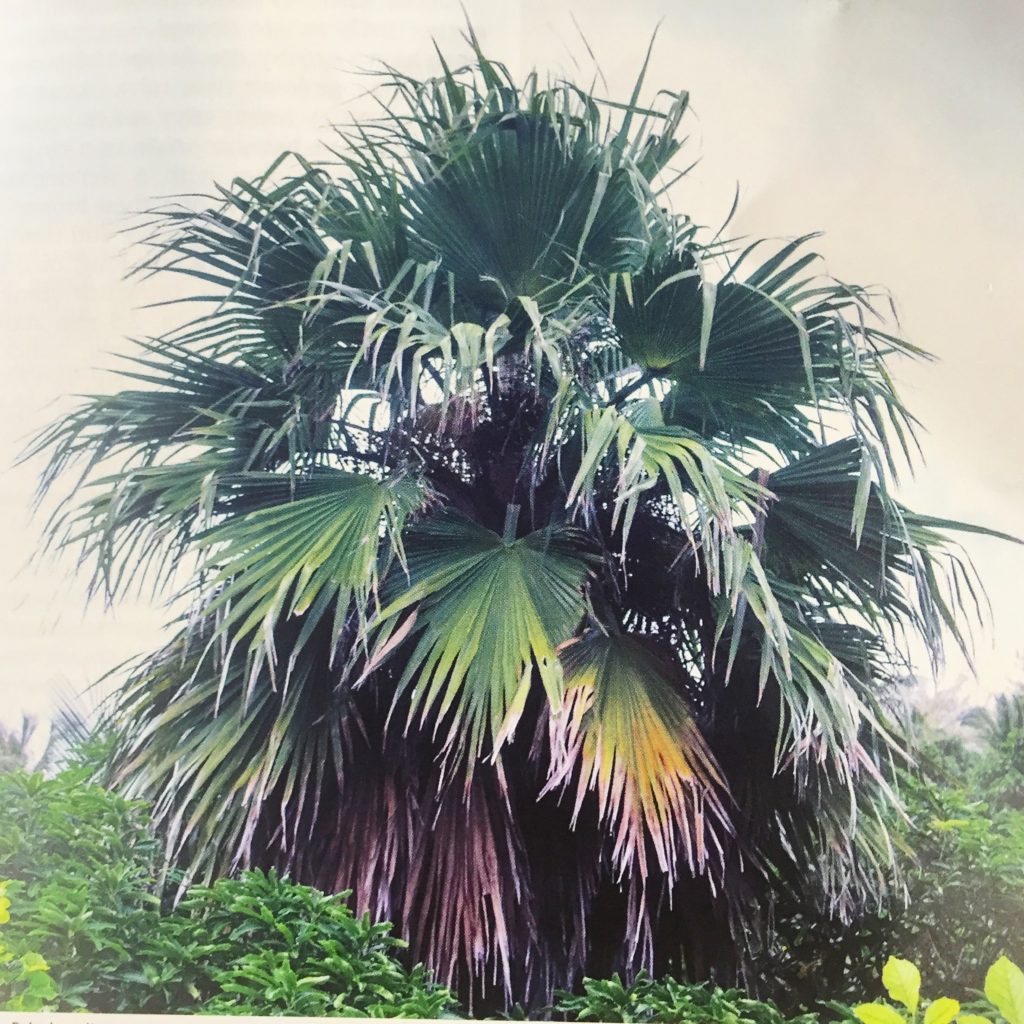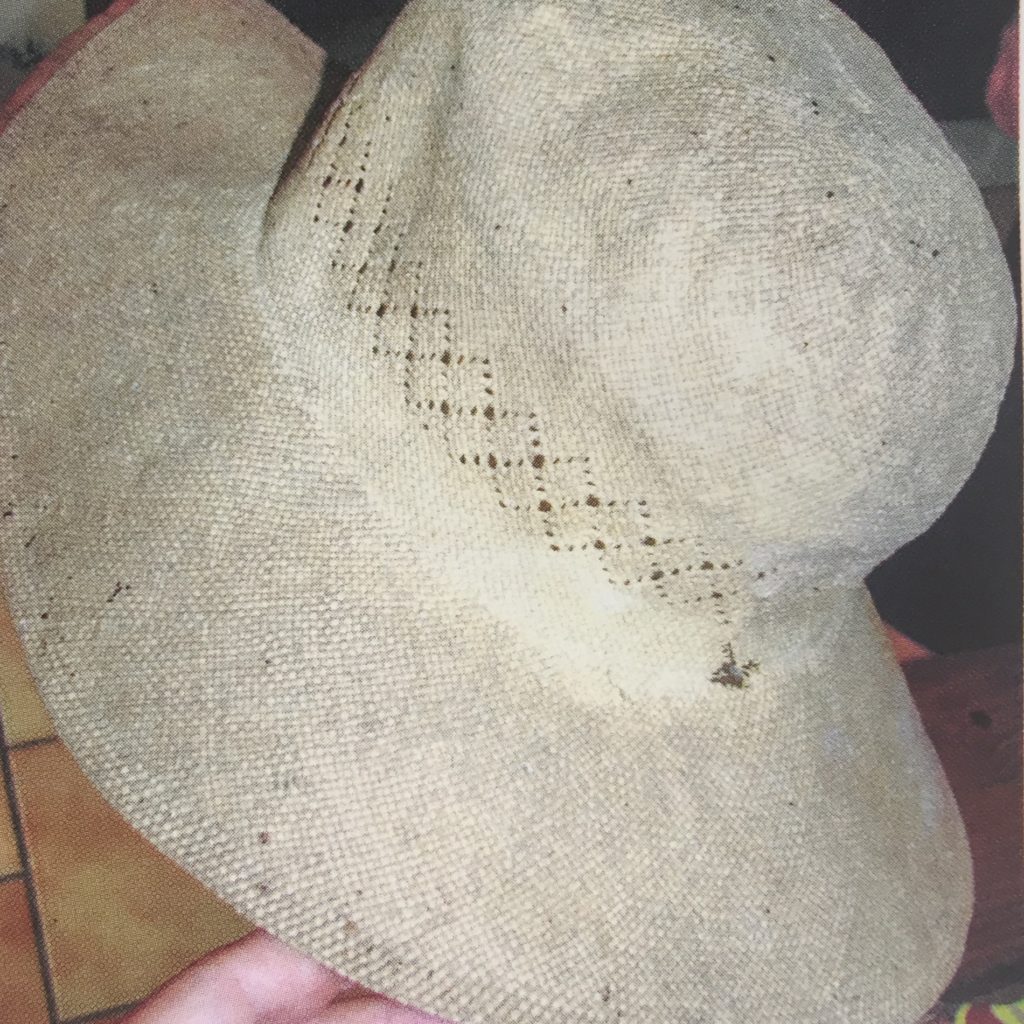
This week’s featured Pritchardia palm is not present in Merwin’s garden, but it was recently discovered in the Marquesas Islands in French Polynesia, so we wanted to feature it.
Pritchardia frequently occurs in spectacular fashion, especially in the Hawaiian Islands, where they tenaciously cling to steep-sided or vertical cliffs several thousand meters high on all the main islands and stunningly, nearly to the exclusion of all other woody plants, on the top of the vertical, columnar sea stack, Huelo, off the northern coast of Molokai.
Pritchardia tahuatana is the fourth and recently documented South Pacific species, found in the Marquesas Islands in French Polynesia. It is considered extinct in the wild and exists only as a domesticated and cultivated species. On the islands of Tahuata and Fatuiva, it is found from near sea level to 455 meters in elevation in anthropogenic forests, which originated by human activity.
According to a new report by Donald Hodel found in Palms, Vol 61(3), 2017, the journal of the International Palm Society, this palm had several historic/traditional uses, including “seeds and fruits for food, medicine, and children’s games, the wood of the trunk for house construction, and the leaves for hats, fans, umbrellas, house roofing, and rituals.”

It occurs on volcanic soil and differs from the other species in the Pritchardia genus in three ways that makes it unique:
- Its non-ventricose trunk (trunk is not swollen in the middle)
- Its inflorescences branched into four orders (how many times it branches off from main stem)
- Its red-to-purple cotyledonary sheath of young, newly germinated seedlings (a cotyledon, also known as the “seed leaf”, is a leaf of the embryo of a seed plant, which upon germination either remains in the seed or emerges, enlarges, or turns green)
Want to virtually “explore” the Merwin Palm Collection? Search through our archive of Palm Facts of the Week, featuring palms hand-planted by W.S Merwin. To search through the Online Merwin Palm Database, visit this link.
If you’re inspired to help The Merwin Conservancy preserve and care for the world-renowned Merwin Palm Collection into the future, please consider making a tax-deductible donation.

